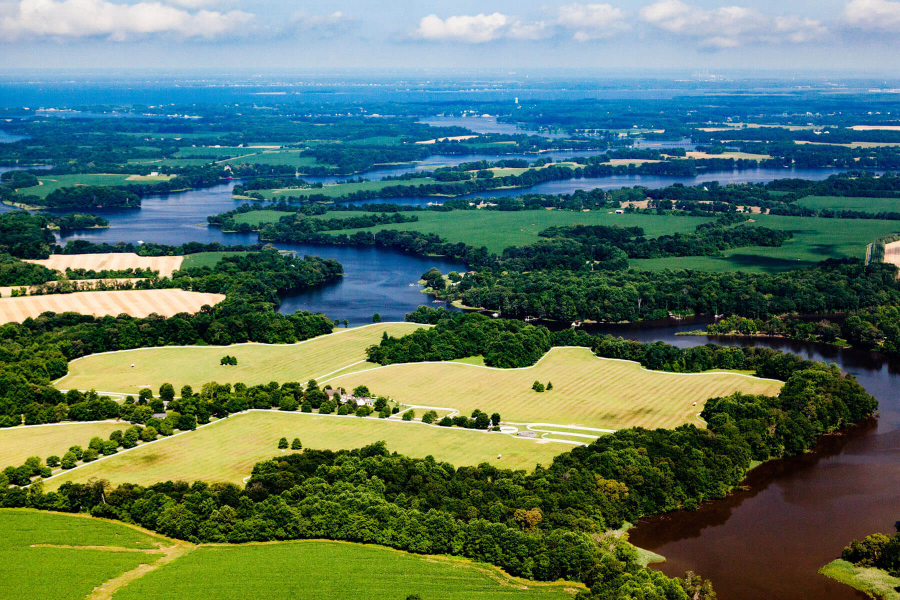Health of Eastern Shore rivers remains steady, makes small gains
ShoreRivers releases report cards for Chester, Sassafras, Choptank, Miles and Wye

On May 16, ShoreRivers released the latest in a series of report cards on the health of five rivers on Maryland’s Eastern Shore. While water quality remained consistent or slightly improved in each of the rivers the nonprofit organization evaluated, nutrient pollution remains a problem.
- Chester River: (C+) Water quality in the Chester River has remained consistent in recent years. While the river's dead zone is often limited to its deepest channels during the hottest months, nutrient and sediment pollution from poor or outdated agricultural practices, failing or outdated septic systems, urban runoff and legacy sources pose continued threats. Nutrient pollution at Centreville Wharf—which is located along a tributary to the Chester—is particularly bad. There, nitrogen and phosphorus levels are two to three times levels measured elsewhere.
- Sassafras River: (C) In 2017, the Sassafras River was healthier near its mouth than its headwaters. While dissolved oxygen levels are strong throughout the Sassafras, the creeks that form the headwaters of the river suffer from nitrogen pollution, turbidity and a lack of bottom-dwelling or benthic organisms. In the upper tidal portion of the river, the Sassafras Riverkeeper has observed high levels of algae but low levels of aquatic plants. A lack of underwater grasses is also a problem for the lower tidal portion of the Sassafras.
- Choptank River: (B) The health of the Choptank River has remained consistent in recent years. While the Lower Choptank experienced poor water clarity and a rise in nitrogen pollution in 2017, the Upper Choptank experienced improved water clarity and a drop in phosphorus pollution. Experts attribute these findings to periods of heavy rainfall in May, July and August, which impacted the Lower Choptank more than the Upper Choptank. There, rainfall has less of an opportunity to soak into the land before it reaches our waterways and more of an opportunity to sweep pollutants directly into the river.
- Miles and Wye rivers: (B-) The health of the Miles and Wye rivers is above the long-term average. While phosphorus pollution is a particular problem in the Wye, dissolved oxygen and water clarity have improved throughout the region's creeks.
Learn more about the state of rivers that flow into the Chesapeake Bay.

Comments
Any progress is relieving, but the main issue that isn’t being brought to the table is the allowance for mass farming being done ALONG THE WATERWAYS. This is a huge issue especially for the health of our waterways, considering it’s extremely easy for all the sediment, fertilizer, and pesticides to be directly released into the water. Agriculture is the reason there’s been 20+ years spent just to restore oxygen in the bay and it’s waterways, while several waterways have shriveled up to nothing. The Delmarva peninsulas ecosystem is at danger and it needs saved somehow.
Following the torrential rains that occurred the week of May 13-20, the Miles River and San Domingo creek became a dark brown that I have never before observed. Even though they are still dark brown, I am hoping it is a short-term response to the deluges. What are your thoughts on this?
Thank you!
Your comment has been received. Before it can be published, the comment will be reviewed by our team to ensure it adheres with our rules of engagement.
Back to recent stories